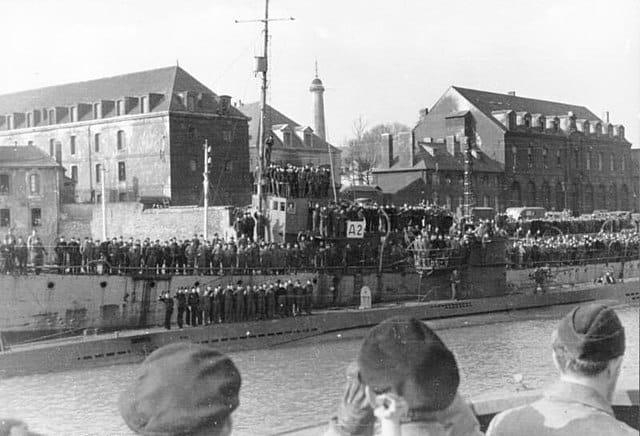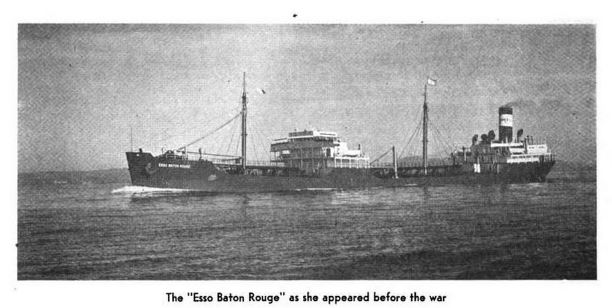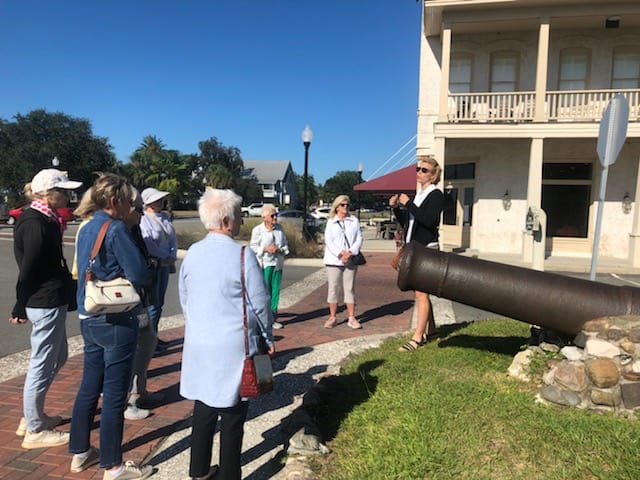World War II In Coastal Georgia: Not a World Away

When we study World War II, we learn of the European and Pacific theaters, but what about destruction on the home front? For several months in 1942, German U-boats, or submarines, inflicted unprecedented carnage upon residents along the United States’ Atlantic coast. Below we will explore these U-boat attacks, including several disastrous events off Southeast Georgia in April 1942.
Upon Germany’s declaring war on the United States in December 1941, Admiral Donitz, commander of Hitler’s U-boat fleet, began planning submarine attacks on American fuel tankers and cargo ships in what he named Paulenschlag, or Operation Drumbeat. The Germans’ goal was to win the war by preventing the United States from supplying Britain with war materiel and fuel. Donitz thought the United States’ military was unprepared and ill-equipped to fight the well-trained U-boat fleet. He was right.
On January 11, 1942, Operation Drumbeat opened with U-boat 123’s shooting down the British freighter Cyclops 300 miles east of Cape Cod, resulting in 87 lost passengers and crew. This U-boat would terrorize Southeast Georgia just a few months later. From this point until March 1942, German U-boats decimated American and Allied ships, sinking – often within sight of shore – more than 100 craft off the American East Coast and in the Gulf of Mexico and Caribbean.
In response, the U.S. military began developing a plan, laying mine fields and positioning mobile artillery to protect harbors. It also ordered shore craft and planes to be ready for combat. Because both the U.S. Navy and Army Air Force lacked sufficient resources to conduct an anti-submarine campaign, the Civil Air Patrol made off-shore patrol flights in civilian aircraft. Although they were effective spotters, these unarmed craft were incapable of driving U-boats from American shores.
In March alone, U-boats attacked 48 ships, sinking almost all of them. Then they entered Georgia coastal waters. In the early hours of April 8, 1942, U-123 spotted a 9,200-ton oil tanker, SS Oklahoma, silhouetted against the illuminated shoreline of St. Simons Island. It sank this vessel and less than an hour later spotted and sank another tanker, the 8,000-ton Esso Baton Rouge. (Although these tankers were salvaged and repaired to rejoin the war effort, eventually U-boats sank them again, this time permanently.)
The next morning, about fourteen miles south of Brunswick, U-123 sank a third ship, the steamship SS Esparta. These three attacks resulted in twenty-three crewman deaths. This submarine then headed down the Florida coast where it sank four more ships, including one off Jacksonville Beach.
These attacks threw Georgia’s coast into a state of panic. The blasts from the exploding tankers shattered windows in Brunswick, and thick oil fouled the area’s beaches for weeks afterward. Frightening rumors of Germans’ landing on shore circulated throughout Georgia coastal communities.

German submariners dubbed these months the “Happy Time” or “Golden Time,” because American defense measures were so weak and ineffective that U-boats could inflict massive damage with little risk. However, by April, finally the U.S. had developed a fleet of 65 antisubmarine vessels. On April 14, the destroyer USS Roper used its new radar technology to detect U-85 off the North Carolina coast and sink it, the first such U-boat sinking. From the end of April, most merchant ships and all tankers traveled in escorted mini-convoys known as bucket brigades.
These new measures were so effective that by the second half of April, Allied shipping losses fell by half. Numbers continued to fall steadily until July 19, when Admiral Donitz ordered the U-boats redeployed. Operation Drumbeat was over. Nonetheless, in the previous several months U-boat attacks had destroyed twenty-two percent of the American tanker fleet; sunk 233 ships off the U.S. and Gulf of Mexico; and killed 5,000 seamen and passengers, more than twice the number of casualties at Pearl Harbor.
Today, this dark episode in American history teaches us that even when unprepared and taken by surprise, the United States can adjust and retaliate. Let us hope that we have similar capabilities to guard against whichever threats may emerge in the future.
For more history of World War II and other wars in our area, join our Cumberland Island Walking Tour or St. Marys Walking Tour!



